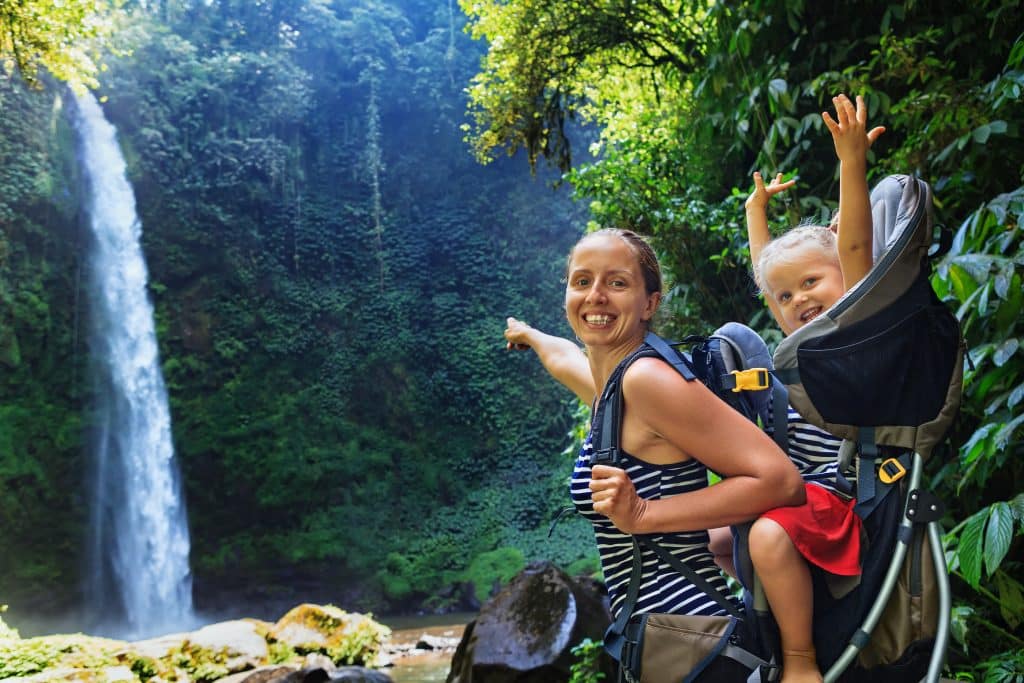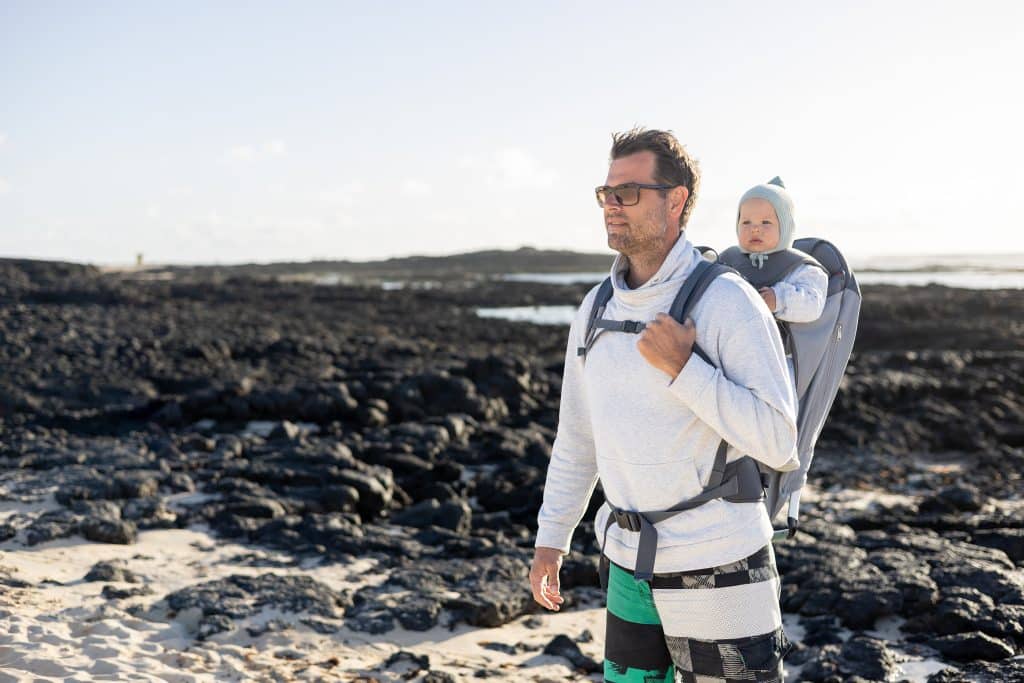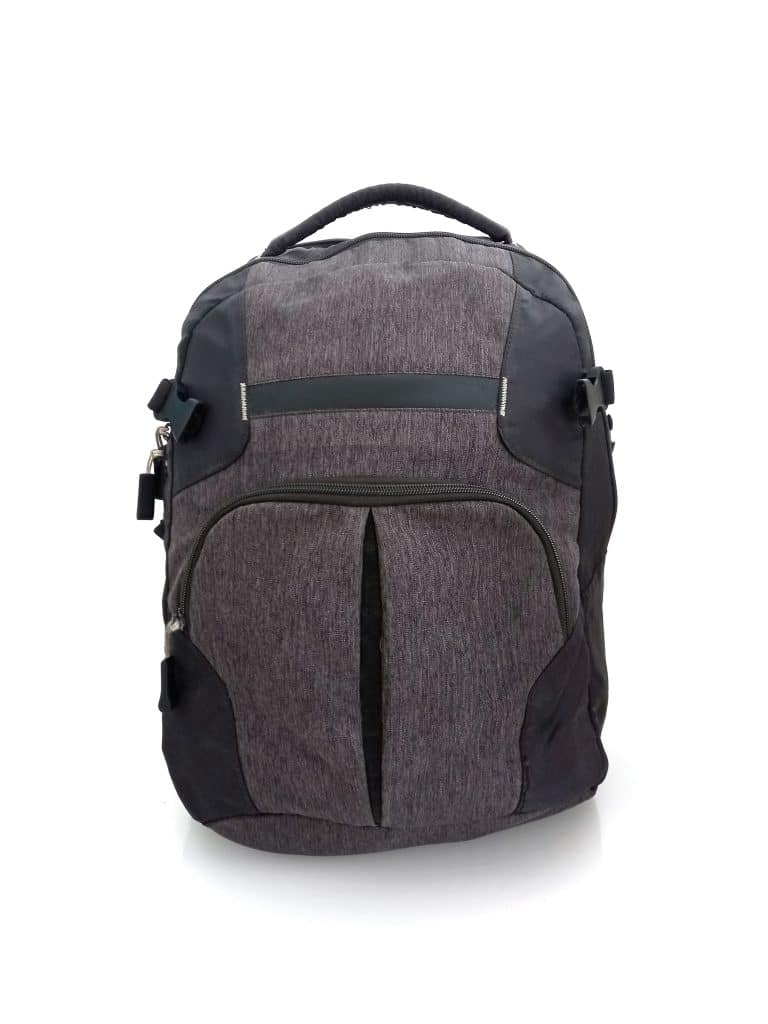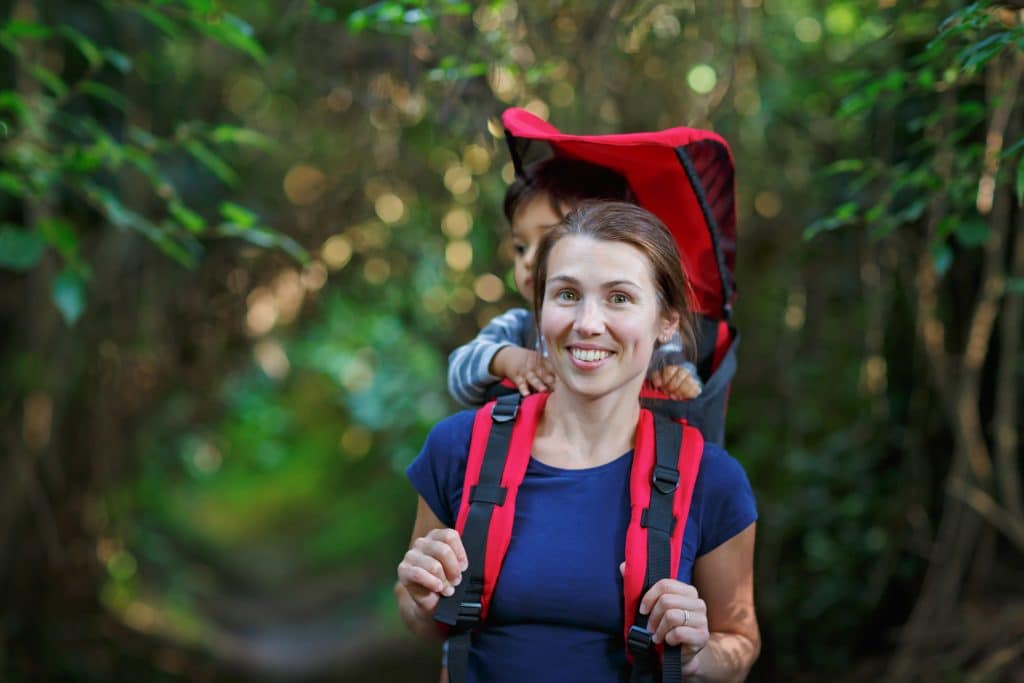The Ultimate Backpack Carrier Buyer’s Guide: A Comprehensive Analysis
When selecting a backpack carrier for hiking, travel, or everyday use, making an informed decision is essential. A backpack carrier is not just a bag; it’s a companion for your adventures. This comprehensive buyer’s guide will provide the knowledge and insights to choose the perfect backpack carrier to suit your needs and lifestyle.
This ultimate backpack carrier buyer’s guide is your companion to finding the ideal backpack for your needs. Whether you’re a casual traveler, a dedicated hiker, or a tech-savvy urbanite, this guide will help you navigate the world of backpack carriers, ensuring you make a choice that enhances your adventures and makes every journey more convenient and enjoyable.
Introduction to Backpack Carriers
Backpack carriers, often referred to simply as backpacks, are versatile and indispensable tools for anyone on the move. Whether embarking on a hiking adventure, traveling the world, or simply going about your daily routine, the right backpack carrier can make all the difference in convenience, comfort, and functionality.
In this introduction, we’ll explore the purpose of backpack carriers, the various types available, and the key features to consider when selecting the perfect backpack for your needs.
Understanding the Purpose
A backpack carrier is more than just a bag; it’s a portable storage solution designed to carry your essentials while keeping your hands free. The primary purpose of a backpack carrier is to provide a convenient way to transport your belongings, whether for outdoor activities, travel, work, or everyday use.
Key purposes of backpack carriers include:
- Outdoor Adventures: Hiking, camping, and other outdoor pursuits often require carrying gear, clothing, food, and other essentials. Backpack carriers for these activities feature specific functionalities like hydration reservoir sleeves, gear attachment points, and weather resistance.
- Travel: Travel backpacks are a popular choice for globetrotters. These packs offer ample storage, easy access to contents, and sometimes even the convenience of carrying as both a backpack and a suitcase.
- Commuting: Everyday backpacks are ideal for commuting to work or school. They typically offer organizational pockets, laptop compartments, and comfortable straps for daily use.
- Specialty Use: Some backpack carriers are designed for unique purposes, such as photography backpacks with customizable compartments for camera gear or hydration packs for runners and cyclists.
Types of Backpack Carriers
Backpack carriers come in various styles, each tailored to specific needs and activities. Common types of backpack carriers include:
- Daypacks: Compact and lightweight, daypacks are perfect for short hikes, city exploration, or as an everyday bag.
- Hiking Backpacks: These are built for outdoor adventures. They feature robust suspension systems, ample storage, and hydration compatibility.
- Travel Backpacks: Designed for globetrotters, travel backpacks offer organization, accessibility, and the convenience of suitcase-style opening.
- Hydration Packs: These are small, lightweight backpacks with a built-in water reservoir, making them ideal for cyclists, runners, and other outdoor enthusiasts.
- Specialty Backpacks: These include packs designed for specific purposes, such as camera backpacks, skiing backpacks, and even child carriers for hiking.
Key Features to Consider
When selecting a backpack carrier, consider the following key features:
- Capacity and Volume: Choose a size that matches your intended use and the amount of gear or items you plan to carry.
- Comfort and Ergonomics: Look for padded straps, belts, and a well-designed suspension system to ensure comfort during extended use.
- Organizational Features: Pockets, compartments, and attachment points can significantly impact how well your gear is organized and accessible.
- Durability and Materials: Durable fabrics and reinforcements are essential, especially for outdoor and travel backpacks.
- Carrying Technology: Some backpacks have innovative features like anti-theft protection, RFID pockets, USB charging ports, and smart capabilities.
In the following sections of this guide, we’ll delve deeper into these features and explore specific types of backpack carriers to help you make an informed decision when choosing your perfect backpack carrier.
Backpack Carrier Styles
Backpack carriers come in various styles, each tailored to specific needs and activities. Understanding these styles is crucial when choosing the perfect backpack carrier to suit your lifestyle. In this section, we’ll explore the most common backpack carrier styles, their features, and the scenarios in which they excel.
DaypacksKey Features:
- Compact and lightweight design.
- It is ideal for short outings and everyday use.
- Limited storage space, suitable for essentials.
- Often equipped with a hydration reservoir sleeve.
Best For:
- Short hikes and nature walks.
- Exploring cities and tourist destinations.
- Daily commutes or carrying essentials to work or school.
Why Choose a Daypack:
Daypacks are the go-to choice for quick excursions or daily activities. They offer just enough space for essentials, keeping you agile and unburdened. Many daypacks include hydration reservoir sleeves, making them ideal for staying hydrated on the go.
- Hiking Backpacks
Key Features:
- Robust suspension system for comfort during extended use.
- Multiple compartments and pockets for organization.
- Ample storage space for gear, clothing, and provisions.
- Often equipped with hydration compatibility and gear attachment points.
Best For:
- Hiking, camping, and outdoor adventures.
- Carrying larger loads on extended trips.
- Storing gear like trekking poles, sleeping bags, and tents.
Why Choose a Hiking Backpack:
Hiking backpacks are designed to endure rugged outdoor conditions. They provide the comfort and support needed for long treks while accommodating gear and supplies. Look for adjustable suspension systems, load-bearing hip belts, and ventilation to enhance your outdoor experiences.
- Travel Backpacks
Key Features:
- Suitcase-style opening for easy access to contents.
- Organization panels and compartments for neat packing.
- Zippered dividers to separate clothing and gear.
- Carrying versatility as both a backpack and a suitcase.
Best For:
- International travel and exploring different destinations.
- Carrying clothing, toiletries, and travel essentials.
- Avoiding checked baggage fees and long waits at airports.
Why Choose a Travel Backpack:
Travel backpacks are your ideal companions for globe-trotting adventures. They offer the convenience of a suitcase with the flexibility of a backpack. Look for models with lockable zippers, compression straps, and a comfortable carrying system to make your journeys smooth and hassle-free.
- Hydration Packs
Key Features:
- Minimalist design with a built-in water reservoir (bladder).
- Lightweight and compact, it is perfect for runners and cyclists.
- Adjustable straps for a secure fit while on the move.
Best For:
- Running, cycling, and other active outdoor activities.
- Staying hydrated without stopping during workouts.
- Carrying only essentials like keys, phones, and snacks.
Why Choose a Hydration Pack:
Hydration packs are all about staying refreshed during intense physical activities. The built-in water reservoir makes it easy to sip without breaking your stride. These packs typically have enough space for small items like keys, energy gels, and a phone.
- Specialty Backpacks
Key Features:
- Tailored for unique activities or needs.
- Specific compartments or features relevant to the specialty (e.g., camera compartments for photography backpacks).
Best For:
- Specialized activities include photography, skiing, or carrying a child while hiking.
- Individuals with unique requirements.
Why Choose a Specialty Backpack:
Specialty backpacks cater to specific demands, making them the perfect choice for niche activities. Whether you’re a photographer needing quick access to your camera, a skier carrying avalanche gear, or a parent enjoying outdoor adventures with your child, these backpacks are designed to meet your unique needs.
Selecting the right style of backpack carrier is the first step toward ensuring your gear, belongings, and essentials are conveniently and comfortably transported. Each style has advantages, so consider your activities and requirements to find the backpack carrier that best suits your lifestyle.
Choosing the Right Size
Selecting the right size of backpack carrier is crucial to ensure it meets your specific needs and offers optimal comfort during use. The size of the backpack is typically determined by its capacity, measured in liters or cubic inches. This section will explore the factors to consider when choosing the appropriate size for your backpack carrier.
- Capacity and VolumeSmall (10-30 Liters): These backpacks are ideal for day trips, short hikes, and minimal gear. They can accommodate essentials like water, snacks, a light jacket, and small personal items.
- Medium (30-50 Liters): Medium-sized backpacks are versatile and suitable for various activities. They provide enough space for day hiking, travel, and light camping. You can carry extra clothing, food, and essentials comfortably.
- Large (50+ Liters): Large backpacks are designed for extended outdoor adventures and travel. They offer ample space for multi-day hiking trips, camping gear, and luggage for longer journeys.
Considerations:
- The length and nature of your activities will determine the required capacity. Short hikes and city exploration demand smaller packs, while extended outdoor adventures need larger options.
- Avoid carrying excessively large backpacks for short trips, as they may become unwieldy and uncomfortable.
- Torso Length and Fit
- Ensure the backpack fits your torso length, the distance from your C7 vertebra (the bone at the base of your neck) to your iliac crest (the top of your hip bones).
- Some backpacks offer adjustable harnesses to accommodate different torso lengths, providing a customizable fit for comfort and stability.
Considerations:
- A properly fitted backpack reduces the risk of discomfort, strain, and pain during extended use.
- Seek advice from knowledgeable salespersons or use a fitting guide provided by the manufacturer to find the right fit.
- Weight Considerations
- Keep in mind that the size of your backpack can influence how much you carry. The larger the backpack, the more tempted you might be to overpack.
- Consider the weight you’re comfortable carrying and aim to keep your backpack’s weight within that limit to prevent fatigue and strain.
Considerations:
- A well-organized and compact packing style can maximize available space while keeping the weight manageable.
- Distribute the load evenly by placing heavier items closer to your back and lighter items outside.
In summary, selecting the right size for your backpack carrier depends on the type and duration of your activities, comfort, and the weight you’re willing to carry. Finding the right balance between having enough space for your essentials and avoiding an excessively heavy and unwieldy load is essential. Choosing the right size ensures that your backpack carrier serves its purpose effectively and enhances your overall experience.
Comfort and Ergonomics
Choosing a backpack carrier that offers comfort and ergonomic design is essential to ensure that your adventures, travels, or daily activities are enjoyable rather than strenuous. In this section, we’ll explore the key elements of comfort and ergonomics to consider when selecting your perfect backpack carrier.
1. Suspension System
The suspension system of a backpack carrier is the foundation of comfort. It consists of the following components:
- Shoulder Straps: Look for padded, contoured shoulder straps that distribute the load evenly and reduce pressure on your shoulders.
- Hip Belt: A well-padded, adjustable hip belt helps transfer the backpack’s weight from your shoulders to your hips, where your body is better equipped to support it.
- Back Panel: A ventilated, cushioned back panel enhances airflow and minimizes sweat, reducing discomfort during extended use.
- Torso Length Adjustment: Some backpacks offer adjustable torso lengths to ensure a custom fit for your body.
Considerations:
- Choose a backpack carrier with a suspension system that matches your body type and provides the right balance of support and comfort.
- Ensure the hip belt and shoulder straps are easily adjustable to accommodate changes in load and terrain.
2. Padded Straps and Belts
Padded straps and belts are critical for minimizing discomfort, especially during long hikes or extended travel. Look for the following features:
- Cushioned Shoulder Straps: Thicker padding on shoulder straps enhances comfort during heavy loads and prolonged use.
- Padded Hip Belt: A well-padded hip belt ensures that the backpack’s weight is effectively distributed to your hips.
Considerations:
- Test the padding to ensure it’s comfortable against your body and doesn’t create pressure points.
- The padding should protect your shoulders and hips without being overly bulky.
3. Ventilation
Ventilation is crucial, especially when hiking or traveling in warm or humid conditions. An effective ventilation system minimizes sweat buildup, reducing discomfort and the risk of chafing.
- Mesh Back Panel: A ventilated mesh panel promotes airflow and minimizes the contact between your back and the backpack.
Considerations:
- The design should allow air to circulate freely, keeping you cool and dry.
- Ventilation is particularly important for backpacks designed for high-intensity activities.
4. Adjustability
A backpack carrier should be adjustable to accommodate different body types and preferences. Look for the following adjustment features:
- Torso Length Adjustment: Some backpacks offer the ability to adjust the torso length, ensuring a custom fit for your body.
- Strap Adjustability: Straps should be adjustable to fine-tune the fit and comfort based on your specific needs.
Considerations:
- Customization is key to comfort. A backpack that can be adjusted to fit your body will provide a more comfortable and enjoyable experience.
5. Load Distribution
An ergonomic backpack carrier ensures that the weight is distributed evenly across your body to prevent strain or discomfort.
- Load-Bearing Hip Belt: A well-padded hip belt efficiently transfers the backpack’s weight to your hips, reducing the load on your shoulders.
Considerations:
- Proper load distribution minimizes the risk of muscle strain, fatigue, and discomfort during extended use.
- Ensure the hip belt is snug but not too tight, allowing you to carry the weight comfortably.
In conclusion, the comfort and ergonomics of your backpack carrier significantly impact your overall experience. When selecting a backpack, prioritize features such as a well-designed suspension system, padded straps and belts, ventilation, adjustability, and proper load distribution. A comfortable backpack carrier enhances your enjoyment of outdoor activities, travel, and everyday use while minimizing the risk of discomfort and strain.
Organizational Features
The organizational features of a backpack carrier can significantly impact your efficiency, convenience, and overall experience, whether you’re hiking, traveling, or simply going about your daily routine. This section will explore the key organizational features to consider when selecting your backpack carrier.
1. Pockets and Compartments
Efficient organization is essential for easy access to your belongings. Look for the following pocket and compartment options:
- Main Compartment: This is the primary storage area for your gear and essentials. It should be spacious and easily accessible, often with a large zipper or lid.
- Top Lid Pocket: Common on hiking backpacks, this zippered pocket provides quick access to small items like a map, compass, or snacks.
- Front Pocket: A large, accessible front pocket is useful for storing items you need to reach quickly, such as rain gear or an extra layer.
- Side Pockets: Mesh side pockets are perfect for water bottles, while zippered side pockets are suitable for small items like a headlamp or sunscreen.
- Hip Belt Pockets: These small pockets on the hip belt are ideal for storing items you want within easy reach, such as a camera or energy bars.
- Internal Pockets: Internal zippered pockets are great for keeping valuable or small items secure and organized.
Considerations:
- The more pockets and compartments, the easier it is to access your gear without digging through the main compartment.
- Consider the type of items you typically carry to ensure the backpack has the right pocket configuration for your needs.
2. Access Points
Easy access to your gear can significantly impact your convenience and overall experience. Different backpack carriers offer various access points:
- Top Loading: This is the most common access style. It’s ideal for hiking and travel backpacks, providing a large, single access point to the main compartment.
- Front Loading: Front-loading backpacks open like a suitcase, providing easy access to the entire main compartment. This style is common in travel backpacks.
- Panel Access: Some backpacks offer panel access on the side, allowing you to access items in the middle of the main compartment without unpacking everything.
Considerations:
- The access point style should match your intended use. Front-loading and panel access styles are more convenient for travel and larger backpacks while top-loading suits hiking and daypacks.
3. Attachment Points
Attachment points on a backpack carrier allow you to secure extra gear, such as hiking poles, a sleeping bag, or a tent:
- Daisy Chains: These loops on the backpack’s exterior are versatile for attaching various items using carabiners.
- Gear Loops: Look for gear loops for securing hiking poles or ice axes, essential for outdoor adventures.
Considerations:
- Attachment points add versatility to your backpack, enabling you to carry gear that may not fit inside.
4. Hydration Compatibility
For outdoor activities, consider whether the backpack carrier is hydration-compatible, allowing you to use a hydration reservoir (bladder):
- Hydration Sleeve: Many backpacks feature a dedicated sleeve inside the main compartment to hold a hydration reservoir.
- Hydration Port: A port or hole allows you to thread the hydration bladder’s hose through the backpack so you can sip water without stopping.
Considerations:
- Hydration compatibility is crucial for activities like hiking and cycling to stay hydrated without pausing your adventure.
In summary, the organizational features of a backpack carrier significantly impact your convenience and ease of access. When choosing a backpack, consider the number and type of pockets and compartments, the access points, attachment points, and whether hydration is compatible. These features should align with your activities and the type of gear you typically carry, ensuring that your backpack carrier meets your specific needs.
Durability and Materials
The durability of your backpack carrier is essential to ensure it can withstand the rigors of your chosen activities and adventures. The choice of materials used in its construction plays a significant role in determining its longevity and performance. This section will explore the factors related to durability and materials when selecting your backpack carrier.
1. Fabric Material
The choice of fabric material significantly influences a backpack carrier’s durability, weight, and performance. Common materials include:
- Nylon: Nylon is lightweight and durable, making it a popular backpack choice. It offers excellent abrasion resistance and can withstand rough outdoor use.
- Polyester: Polyester is also lightweight and resistant to UV rays and moisture. It may not be as abrasion-resistant as nylon, but it’s cost-effective.
- Cordura: Cordura is a brand of fabric known for its exceptional durability. Backpack carriers made from Cordura are robust and long-lasting.
Considerations:
- The type of fabric affects the backpack’s overall weight, with nylon generally being lighter than polyester.
- Consider the primary activities you’ll engage in to determine which fabric material best suits your needs.
2. Reinforcements and Bottom Material
The areas of a backpack carrier that receive the most wear and tear are typically reinforced with additional layers or materials. The bottom of the backpack is particularly important:
- Reinforced Bottom: Look for a reinforced bottom with a thicker, more durable material to protect against abrasion when setting the backpack down.
Considerations:
- Please pay attention to the reinforcements on high-stress areas like the bottom, as they contribute to the overall longevity of the backpack.
3. Zippers and Hardware
The quality of zippers and hardware, such as buckles and clasps, directly affects the durability and ease of use of the backpack carrier:
- YKK Zippers: YKK is a renowned brand for producing high-quality, durable zippers resistant to jamming and wear.
- Heavy-Duty Hardware: Look for backpacks with heavy-duty buckles, clasps, and snaps that can withstand stress and repeated use.
Considerations:
- Quality zippers and hardware ensure that your backpack can endure the demands of your activities without experiencing failures.
4. Seams and Stitching
The stitching and seams of a backpack carrier play a vital role in its overall strength and durability:
- Reinforced Seams: Pay attention to reinforced or double-stitched seams, which are more robust and less prone to unraveling.
- Taped Seams: Some backpacks feature taped seams, which provide extra protection against moisture infiltration.
Considerations:
- The quality of the stitching determines how well the backpack holds together under the strain of heavy loads and rough use.
5. Frame Material
For larger backpack carriers, the frame material influences both durability and comfort:
- Internal Frame: Many hiking and travel backpacks feature internal frames made of lightweight, durable materials like aluminum or carbon fiber.
- External Frame: External frames in larger backpacks offer robust support but may add weight.
Considerations:
- The frame material influences the backpack’s overall strength and ability to maintain its shape and comfort during use.
In conclusion, when selecting a backpack carrier, consider the durability and materials used in its construction. Pay attention to the fabric material, reinforcements, zippers and hardware, seams and stitching, and frame material. Your choice should align with the activities you’ll undertake and your expectations for the backpack’s longevity and performance. A durable backpack ensures that it can withstand the challenges of your adventures and provides reliable service for years to come.
Carrying Technology and Innovations
Backpack carriers have seen significant advancements in technology and design, resulting in innovative features that enhance comfort, convenience, and performance. When selecting a backpack carrier, it’s important to consider the carrying technology and innovations that best suit your needs. In this section, we’ll explore some of the cutting-edge features and technologies to look for.
1. Adjustable Suspension Systems
Some modern backpack carriers feature advanced adjustable suspension systems. These systems allow you to fine-tune the backpack’s fit to your body, providing a customized and comfortable experience. Look for:
- Torso Length Adjustment: The ability to adjust the torso length ensures a precise fit, reducing strain and discomfort during extended use.
- Load Lifter Straps: Load lifter straps help distribute the weight evenly, reducing pressure on your shoulders.
Considerations:
- An adjustable suspension system enhances comfort and minimizes the risk of fatigue and pain during long hikes or extended travel.
2. Anti-Gravity Technology
Anti-gravity technology, often found in hiking backpacks, uses a suspended mesh back panel for excellent ventilation and weight distribution. This innovative design minimizes the feeling of carrying a heavy load. Look for:
- Mesh Back Panel: A suspended mesh back panel provides excellent ventilation, reducing sweat and discomfort.
- Tensioned Hip Belt: Some anti-gravity systems feature a tensioned hip belt that moves with your body, enhancing comfort and stability.
Considerations:
- Anti-gravity technology benefits hikers and backpackers who want a comfortable, weight-dispersing design.
3. Integrated Hydration Systems
Many modern backpack carriers come with integrated hydration systems, which allow you to stay hydrated without stopping your activity. Look for:
- Hydration Reservoir Sleeve: A dedicated sleeve inside the backpack to hold a hydration reservoir.
- Hydration Port: A port or hole that allows you to thread the hydration reservoir hose through the backpack so you can sip water on the go.
Considerations:
- Integrated hydration systems are essential for outdoor activities like hiking, trail running, and cycling.
4. Smart Backpacks
In the age of technology, smart backpacks are emerging, equipped with features such as built-in power banks, Bluetooth speakers, and even GPS tracking. Look for:
- Built-In Power Banks: These allow you to charge your devices on the go, ensuring you stay connected and powered up.
- Bluetooth Speakers: Built-in speakers provide entertainment during your adventures.
- GPS Tracking: Some smart backpacks offer GPS tracking, enhancing security and peace of mind.
Considerations:
- Smart backpacks are ideal for tech-savvy travelers and adventurers who want the convenience of integrated technology.
5. Anti-Theft Features
For travelers, anti-theft features can provide added security and peace of mind. These features include:
- Lockable Zippers: Zippers can be secured with a lock to prevent unauthorized access to your belongings.
- RFID-Blocking Pockets: Pockets are designed to block RFID signals, protecting your passport and credit cards from electronic theft.
Considerations:
- Anti-theft features are particularly valuable when traveling in crowded or unfamiliar places.
6. Weather-Resistant Materials
Innovations in materials have led to the development of weather-resistant backpack carriers. Look for backpacks made from materials that are both durable and weatherproof to protect your gear from rain and moisture.
Considerations:
- Weather-resistant backpacks are necessary for outdoor activities and travel, ensuring your belongings stay dry even in challenging conditions.
In summary, carrying technology and innovations have significantly improved backpack carriers. When selecting a backpack, consider features such as adjustable suspension systems, anti-gravity technology, integrated hydration systems, smart backpack features, anti-theft measures, and weather-resistant materials. These innovations enhance your overall comfort, convenience, and performance, ensuring that your backpack carrier meets the demands of your chosen activities and adventures.
Budget Considerations
Budget is crucial when selecting a backpack carrier, as it determines which options are within your financial reach. It’s important to find a backpack that meets your needs and fits comfortably within your budget. This section will explore budget considerations to help you make an informed decision.
1. Establish Your Budget
The first step is determining how much you will spend on a backpack carrier. Consider the following factors when setting your budget:
- Frequency of Use: If you plan to use the backpack frequently for various activities, invest more in a higher-quality, versatile option.
- Type of Activities: The nature of your activities also affects your budget. Hiking and outdoor adventures require specialized backpacks, while travel backpacks can vary in cost.
- Brand and Features: Recognize that well-known brands and advanced features often come at a higher cost. Decide if these factors are worth the extra expense.
Considerations:
- Establishing a clear budget helps narrow down your options and prevents overspending.
2. Prioritize Essential Features
To stay within your budget, prioritize essential features that align with your needs and activities. Consider:
- Size: A smaller, simpler backpack may be more budget-friendly, while larger, feature-rich backpacks tend to cost more.
- Materials: Opt for durable materials that suit your intended use, but remember that advanced materials can increase the price.
- Features: Decide on the must-have features that will enhance your experience without adding unnecessary cost.
Considerations:
- Focusing on your core requirements ensures you get the most value for your budget.
3. Sales, Discounts, and Seasonal Deals
Keep an eye out for sales, discounts, and seasonal promotions. Many outdoor and travel gear retailers offer discounts at specific times of the year, which can help you secure a high-quality backpack at a lower price.
- Black Friday and Cyber Monday are prime times for finding discounted backpack carriers and other gear.
- End-of-Season Sales: Retailers often clear out inventory at the end of a season, making it an excellent opportunity to find discounted backpacks.
- Outlet Stores: Consider visiting outlet stores for budget-friendly options from well-known brands.
Considerations:
- Timing your purchase with sales events can yield significant savings without compromising quality.
4. Consider Used or Secondhand Options
If you’re on a tight budget, exploring the used or secondhand market can be viable. Many outdoor enthusiasts sell their gently used gear online or at local gear swap events.
- Online Marketplaces: Websites and apps like eBay, Craigslist, or dedicated outdoor gear resale platforms are great places to find pre-owned backpack carriers.
- Local Gear Swaps: Check for any local gear swap events or outdoor gear consignment shops in your area.
Considerations:
- When buying used gear, thoroughly inspect the backpack for any signs of wear, damage, or defects to ensure it’s in good condition.
5. Budget-Friendly Brands
Some brands specialize in providing budget-friendly outdoor and travel gear without sacrificing quality. While these backpacks may not have all the premium features of higher-end models, they can still offer excellent performance.
Considerations:
- Research budget-friendly brands and read user reviews to find options that offer good value for your money.
In conclusion, budget considerations are essential when choosing a backpack carrier. Establish a budget that aligns with your financial capacity and prioritize essential features. Keep an eye out for sales, discounts, and used options, and explore budget-friendly brands to find a backpack that meets your needs without breaking the bank. With careful planning and consideration, you can find a backpack carrier that suits your requirements and budget.
Top Backpack Carrier Brands
When choosing a backpack carrier, selecting a reputable brand can provide you with confidence in the quality, durability, and performance of your pack. The outdoor and travel gear industry features numerous brands known for their expertise and innovation in backpack design. Below, we’ll explore some of the top backpack carrier brands to help you make an informed decision.
- Osprey
Osprey is a well-respected brand known for its high-quality backpacks and a wide range of outdoor gear. They offer backpack carriers suitable for various activities, from hiking and camping to traveling. Osprey is known for its innovative suspension systems, providing exceptional comfort for extended use.
1. Deuter
Deuter is a German brand with a long history of producing backpack carriers for outdoor and urban adventures. They focus on creating comfortable and ergonomic packs that can withstand the demands of hiking, trekking, and traveling.
2. Gregory
Gregory is known for its innovative and well-constructed backpack carriers. They offer a variety of styles, from hiking and trekking packs to travel and daypacks. Gregory is recognized for its attention to detail and quality craftsmanship.
3. The North Face
The North Face is a prominent brand in the outdoor industry, providing a wide range of gear, including backpack carriers. They offer durable and versatile packs for outdoor activities, travel, and everyday use.
4. Arc’teryx
Arc’teryx is known for its commitment to crafting high-performance outdoor gear. Their backpack carriers are designed with precision and incorporate advanced materials and technologies. They are particularly popular among hikers and climbers.
5. Patagonia
Patagonia is a brand with a strong focus on environmental responsibility and sustainability. Their backpack carriers are designed for outdoor adventures and travel while adhering to eco-friendly principles.
6. Columbia
Columbia is a well-known brand in the outdoor apparel and gear industry. They offer a range of backpack carriers suitable for various outdoor activities, from hiking to camping and beyond.
7. Marmot
Marmot is a brand that combines performance and style in their backpack carriers. They offer a range of packs suitable for outdoor enthusiasts, focusing on durability and functionality.
8. Granite Gear
Granite Gear specializes in designing backpack carriers for hikers, backpackers, and adventurers. Their packs are known for their lightweight design and durability, making them ideal for long treks.
9. Kelty
Kelty has a long history of producing outdoor gear, including backpack carriers for various activities. They are recognized for their budget-friendly options and a wide range of styles to suit different needs.
Considerations:
- While these brands are recognized for their quality and performance, exploring specific models and collections is important to find a backpack carrier that best aligns with your needs and preferences.
- Reading user reviews and seeking recommendations from experienced outdoor enthusiasts can also help you make an informed decision when selecting a backpack carrier from one of these top brands.
Maintenance and Care of Your Backpack Carrier
Proper maintenance and care of your backpack carrier are essential to ensure your gear’s longevity, performance, and safety. Whether you use it for hiking, traveling, or other outdoor activities, taking care of your backpack is a valuable practice. This section will outline the steps and tips for maintaining and caring for your backpack carrier.
1. Cleaning Your Backpack
Regular cleaning helps prevent the accumulation of dirt, sweat, and odors. The cleaning process varies based on the materials and design of your backpack:
- Empty Your Backpack: Remove all items from your backpack, including pockets and compartments.
- Shake Out Dirt: Shake your backpack to remove loose dirt and debris.
- Spot Clean Stains: For minor stains, use a damp cloth or sponge with mild soap to spot-clean the affected areas.
- Hand Wash: Follow the manufacturer’s instructions if your backpack is machine washable. Hand wash the entire pack in a bathtub or large basin with a mild detergent for non-machine, washable backpacks.
- Rinse Thoroughly: Ensure that you rinse away all soap and detergent thoroughly.
- Dry Properly: Hang your backpack upside down to dry. Avoid direct sunlight and high heat, as they can damage the materials.
Considerations:
- Always check the care instructions provided by the manufacturer for specific cleaning guidelines.
2. Storage and Packing
Proper storage and packing are crucial for maintaining your backpack carrier:
- Empty Before Storage: Always empty your backpack and remove debris or crumbs after each use.
- Store Unpacked: Store your backpack in a cool, dry place when not in use. Avoid keeping heavy objects on top of it that may deform the shape.
- Don’t Overload: Avoid overloading your backpack beyond its recommended capacity to prevent strain on the seams and zippers.
3. Zipper Care
Zippers are a common point of failure in backpacks. Here’s how to care for them:
- Zip Slowly: When opening or closing zippers, do so slowly to prevent fabric from getting caught in the teeth.
- Clean Zippers: Regularly clean zippers with a small brush to remove dirt and debris.
- Lubricate Zippers: Use a zipper lubricant or wax to keep zippers moving smoothly. Apply sparingly and wipe away any excess.
4. Check for Wear and Tear
Regularly inspect your backpack for signs of wear and tear, such as frayed seams, loose stitching, or damaged buckles. Address any issues promptly:
- Repair Minor Issues: Minor issues like loose threads can often be repaired with a needle and thread.
- Professional Repair: For more extensive damage, consider professional repair services or contact the manufacturer if the backpack is under warranty.
5. Proper Weight Distribution
Ensure that you distribute the weight in your backpack evenly. Heavy items should be placed close to your back and high in the pack, while lighter items can be lower and towards the front. This distribution prevents strain on the seams and offers better balance.
6. Hydration Bladder Care
If your backpack carrier has a hydration bladder, proper care is crucial:
- Regular Cleaning: After each use, clean the bladder, hose, and bite valve with warm, soapy water. Rinse thoroughly and allow them to dry completely.
- Hydration Bladder Drying: Ensure your hydration bladder is completely dry before storing it to prevent mold or mildew growth.
- Use Appropriate Liquids: Only use liquids suitable for hydration bladders to avoid damage or contamination.
Considerations:
- When in doubt about the care and maintenance of your backpack carrier, consult the manufacturer’s guidelines or contact their customer service for specific advice.
By following these maintenance and care practices, you can extend the lifespan of your backpack carrier and ensure that it continues to serve you well on your outdoor adventures and travels. Regular cleaning, proper storage, zipper care, and weight distribution are key elements in maintaining your backpack’s quality and functionality.
Safety Considerations for Your Backpack Carrier
Safety is paramount when using a backpack carrier for various outdoor activities. Whether hiking, traveling, or engaging in other adventures, taking safety precautions ensures a smooth and secure experience. This section will discuss important safety considerations when using a backpack carrier.
1. Proper Weight Distribution
One of the primary safety considerations is how you distribute the weight within your backpack carrier. An uneven or poorly distributed load can lead to discomfort and strain on your body. Follow these tips for proper weight distribution:
- Place heavier items in the pack and close to your back to maintain balance.
- Distribute the weight evenly on both sides to prevent leaning to one side.
- Secure the load to minimize shifting while you’re in motion.
2. Fit and Adjustment
Ensure your backpack carrier fits you properly and is adjusted to your body. An ill-fitting backpack can cause discomfort and strain:
- Adjust the straps, including shoulder straps, hip belts, and chest straps, to ensure a snug and comfortable fit.
- Pay attention to the torso length adjustment to match your body’s dimensions.
3. Load Limit Adherence
Every backpack carrier has a maximum load capacity specified by the manufacturer. Exceeding this limit can compromise your safety, so adhere to it strictly:
- Don’t overload your backpack with excessive weight, leading to strain, fatigue, and discomfort.
- Follow the manufacturer’s recommendations for the maximum load capacity.
4. Balance and Stability
Maintaining balance and stability is essential to prevent falls and accidents:
- When wearing your backpack carrier, be mindful of your balance and posture.
- Take extra care when navigating challenging terrain, such as steep inclines, rocky paths, or slippery surfaces.
5. Visibility and Signaling
When hiking or traveling outdoors, visibility and signaling are crucial for your safety:
- Wear bright, visible clothing, especially in areas where hunting may occur.
- Carry signaling devices like whistles, flashlights, or mirrors for emergencies.
6. Weather Preparedness
Be prepared for changing weather conditions, which can affect your safety and comfort:
- Pack appropriate clothing layers for various weather scenarios, including rain gear and warm clothing.
- Check the weather forecast before your trip and be ready to adjust your plans accordingly.
7. Terrain Awareness
Stay aware of your surroundings and the terrain you’re navigating:
- Be cautious on uneven terrain, loose rocks, and slippery surfaces.
- Use trekking poles for added stability and to reduce the strain on your body.
8. Emergency Plan
Always have an emergency plan in place, especially if you’re hiking or traveling in remote areas:
- Share your itinerary and expected return time with someone reliable.
- Carry essentials like a first-aid kit, navigation tools, and communication devices (such as a mobile phone or satellite communicator).
9. Environmental Considerations
Respect the environment and adhere to Leave No Trace principles:
- Avoid littering and dispose of waste responsibly.
- Stay on designated trails and avoid damaging or disturbing natural habitats.
10. Health and Physical Condition
Your health and physical condition play a crucial role in your safety:
- Ensure you’re in good health and physical shape before attempting strenuous activities.
- Listen to your body, take breaks, and don’t push yourself beyond your limits.
Considerations:
- Safety is a shared responsibility. It’s important to prioritize your safety and be considerate of others when using your backpack carrier in outdoor settings.
By following these safety considerations, you can have a safer and more enjoyable experience using your backpack carrier for various outdoor activities. Proper weight distribution, fit and adjustment, load limit adherence, and terrain awareness ensure safety and comfort.
Frequently Asked Questions (FAQs) – Backpack Carriers
Here are some frequently asked questions and answers about backpack carriers to help address common queries and concerns:
Q1: What is the difference between a backpack carrier and a regular backpack?
A1: A backpack carrier, often called a baby or child carrier, is specifically designed to carry infants or small children. It includes a harness, a padded seat, and sometimes a sunshade. Regular backpacks are designed for carrying gear rather than children.
Q2: How do I choose the right size for a backpack carrier?
A2: Select a backpack carrier that comfortably fits your body and child. Measure your torso length and consider the child’s size. Most manufacturers provide sizing guidelines to help you choose the right fit.
Q3: Can I use a backpack carrier for hiking with a baby or toddler?
A3: Yes, backpack carriers are ideal for hiking with young children. Look for carriers with adequate support, safety features, and a comfortable fit for you and the child.
Q4: What’s the maximum weight limit for a backpack carrier?
A4: Weight limits vary by brand and model, but many backpack carriers can support children up to 40-60 pounds. Check the manufacturer’s specifications for the specific carrier you’re interested in.
Q5: Are there safety harnesses or restraints for children in backpack carriers?
A5: Yes, most backpack carriers have safety harnesses or straps to secure your child safely within the carrier. Make sure to use these restraints as directed.
Q6: Are there any age or height restrictions for using a backpack carrier?
A6: Manufacturers provide age and height recommendations for their carriers. Generally, backpack carriers are suitable for children who can sit up unassisted (around six months) up to around 4-6 years old, depending on the child’s size.
Q7: Can I bring a baby in a backpack carrier on an airplane?
A7: Many airlines allow the use of backpack carriers for babies during the flight. However, check with the specific airline for their policies and guidelines.
Q8: What are the best practices for safety when using a backpack carrier?
A8: Properly adjust the carrier to your body, secure your child with the harness, check for stability, and maintain balance when wearing a backpack carrier. Also, follow the manufacturer’s safety guidelines.
Q9: How do I clean and maintain a backpack carrier?
A9: Refer to the care and maintenance instructions provided by the manufacturer. You can spot clean stains, hand wash the carrier with a mild detergent, and avoid machine washing. Allow it to air dry.
Q10: Are there any alternatives to backpack carriers for carrying children?
A10: Yes, alternatives include front carriers, slings, and strollers designed for young children. The choice depends on your preferences and the age of your child.
Q11: Can I use a backpack carrier for long-distance hikes?
A11: Yes, many backpack carriers are suitable for long hikes. Look for models with adequate padding, support, and features to ensure you and your child remain comfortable during extended outings.
Q12: Can I carry additional gear in a backpack carrier along with my child?
A12: Some backpack carriers include storage pockets for small diapers and snacks. However, it’s essential to maintain a balanced load and avoid overloading the carrier, which can affect safety and comfort.
Please note that these answers provide general information, and it’s essential to refer to the specific manufacturer’s guidelines and recommendations for your backpack carrier model.
Conclusion: Your Perfect Backpack Carrier Awaits
In conclusion, selecting the perfect backpack carrier is vital for outdoor enthusiasts, parents, and anyone looking to transport loads comfortably and efficiently. Whether planning a family hike, a day of travel, or a solo adventure, the right backpack carrier can significantly enhance your experience.
Throughout this comprehensive guide, we’ve explored various aspects of backpack carriers, from their types and key features to top brands and safety considerations. Considering these factors, you can make an informed choice that aligns with your needs and preferences.
Remember that the perfect backpack carrier offers a secure and comfortable fit, is appropriate for your intended use, and meets safety and quality standards. Regular maintenance and care ensure your carrier’s longevity and performance.
Whether you’re venturing into the great outdoors, embarking on a family adventure, or simply needing a reliable way to carry your gear, your perfect backpack carrier awaits. Embrace the journey and confidently explore the world, knowing you’ve made a well-informed choice in selecting the ideal backpack carrier for your needs.









